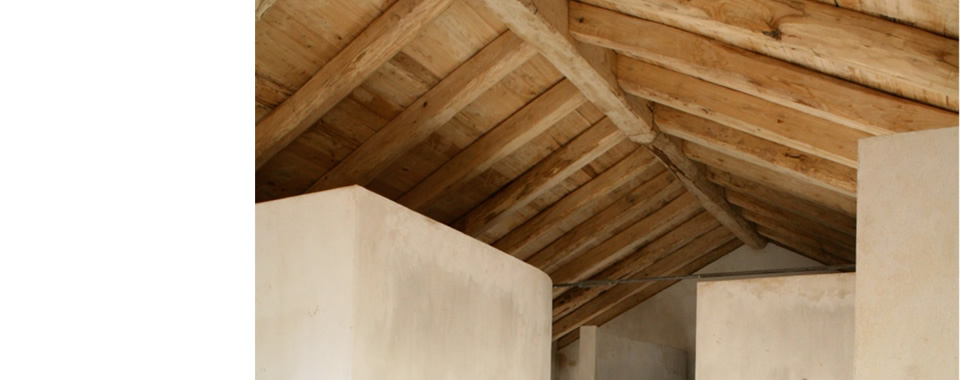

Score - Sustainable Construction in Rural and Fragile Areas for Energy efficiency
Guidelines for Integrated territorial Planning:
Microclimatic and environmental control through vegetation
The following guidelines come from a deep analysis of case studies, norms and regulations, in relation to the local level. This analysis is summarized in a card that can be downloaded in Greek.
Integrated vegetation can have various positive effects in a building's environmental behaviour by tuning its microclimatic condition. Vegetation is known for its air purification properties (removal of dust CO2, NO2 and other GHGs etc.) so usage of vegetation species indoors can provide clean air for the building's inhabitants. Applying vegetation techniques on the outside of buildings (facades, roofs) in the form of climbing plants, planter boxes, pre-vegetated panels helps the building to improve its overall thermal behaviour (better insulation, improved cooling capacity).
There are many vegetation systems in the market with differences regarding the anticipated outcome, the vegetation species, the cost, the visual impact on the building, the structural integration etc. and as a result, those who are willing to use this technique have to be advised by experts on this subject.
Vegetation offers several positive impacts to the buildings that use this application, some of which are insulation, protection from weather conditions, energy and money saving due to limited use of air condition and heating systems, improvement of air-quality and aesthetic. However, it is crucial to conduct a research on the species that can be used in different areas, their special needs in water and their resistance regarding weather conditions. To this end, there is a series of scientists and technicians that are able to propose the most suitable choices and have the desired results.
Indication for the Bio-construction Action Plan
Pursuant to the guidelines written above, here are synthetically reported the criteria/examples for pilot projects to be financed in MED territory, in relation with the specific treated theme. These criteria/examples, together with the ones resulting from all the themes of eco-construction tool matrix, will make up a Bio-construction Action Plan for each partner’s country.
- Projects focused on the best practices regarding the creation of green roofs and the use of special vegetation on the surroundings of buildings aiming at reserving the microclimatic and environmental conditions that improves the life of the building’s users.
- Projects that aim at developing tools and data bases that will include the most suitable species according to weather conditions and desired results, as well as special techniques and guidelines offered by scientists with experience on this subject.
- Projects that will collect all the existing regulations and normative aiming at integrating vegetation as a means of achieving energy efficiency and improving the architectural characteristics of different areas.
Possible criteria for MED bio–housing quality certificate
The “Regulation for Buildings Energy Performance” (KENAK) that constitutes the normative regulations for the implementation of Law 3661/08 according to the Directive 2002/91 EC, includes a small reference on the integration of vegetation in open-air areas, but not on roofs. As far as the guide entitled “Bioclimatic Design of Building” based on the principal guidelines of “KENAK” and implemented by the Technical Chamber of Greece (TEE), is concerned, vegetation and green roofs are analytically mentioned as a means of protection by the air and the solar irradiation as well as a factor for maintaining the temperature of the building in a steady level.
Case studies
Bioclimatic hotel in Kefalonia
